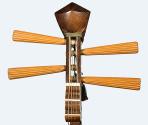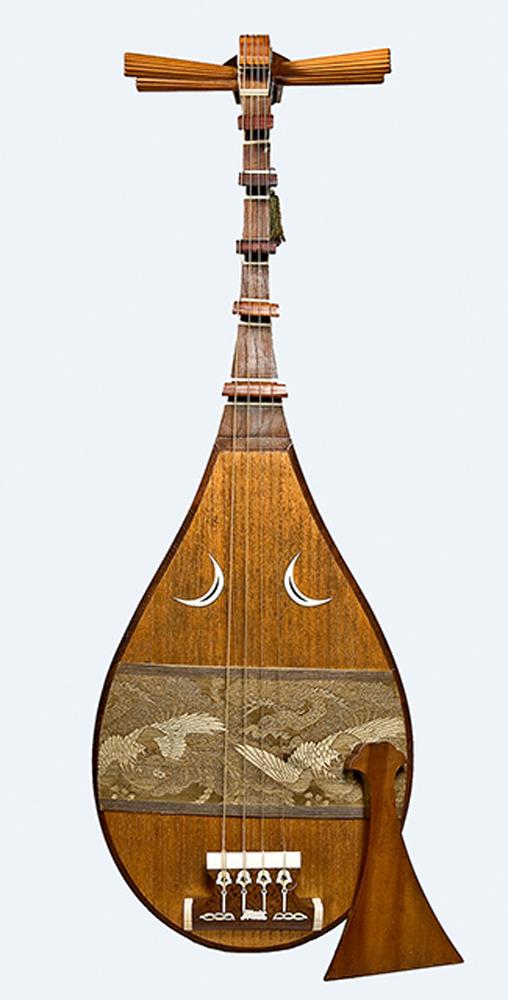Home
>
Works
>
Chikuzen biwa
>
Advanced Search
Folk, Indigenous, and Global
Plucked Strings
Chikuzen biwa
Alternate name:Short-neck lute
Date: 1890-1920 ca.
Place Made:Japan, Asia
Serial No: none
DescriptionShort-necked, pear-shaped lute with four strings. Five raised wooden frets. Two crescent-shaped soundholes above decorative strip of brocade that serves as a pickguard. Green, braided tassel tied to pegbox. Biwa music and its practice was used in the training of samurai beginning in the 16th century. The legacy of the biwa, which dates to the late 7th century, nearly disappeared following World War II, as a result of the demise of the samurai tradition in Japan.
ProvenancePreviously displayed in a New York City café. By 1976, sold to William Gribbon, Greenfield, Massachusetts. Purchased from Gribbon, 1976.
Terms
Credit Line: Board of Trustees, 1976.
Not on view
Published ReferencesAndré P. Larson, The National Music Museum: A Pictorial Souvenir (Vermillion: National Music Museum, 1988), p. 30.
Object number: 01433






